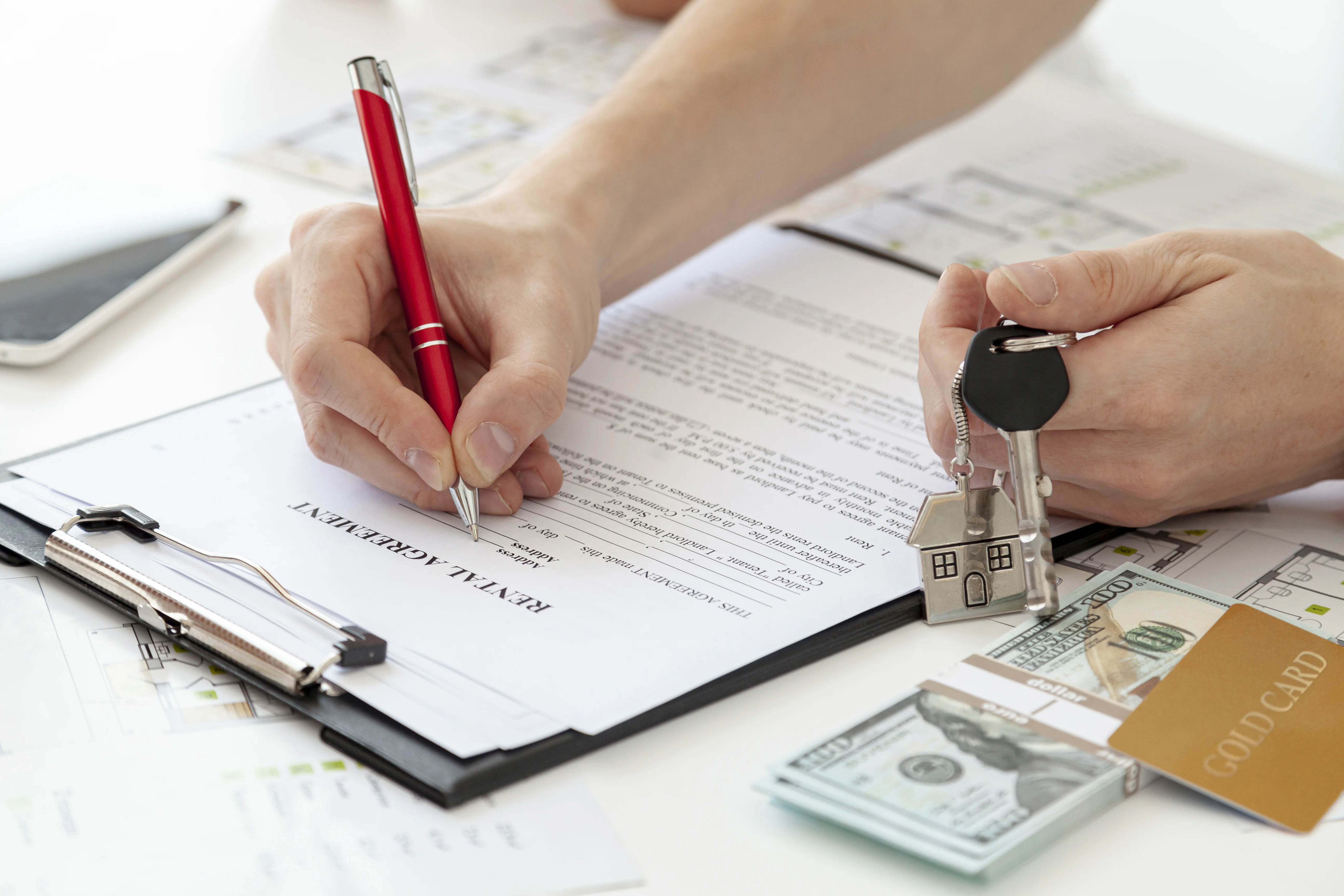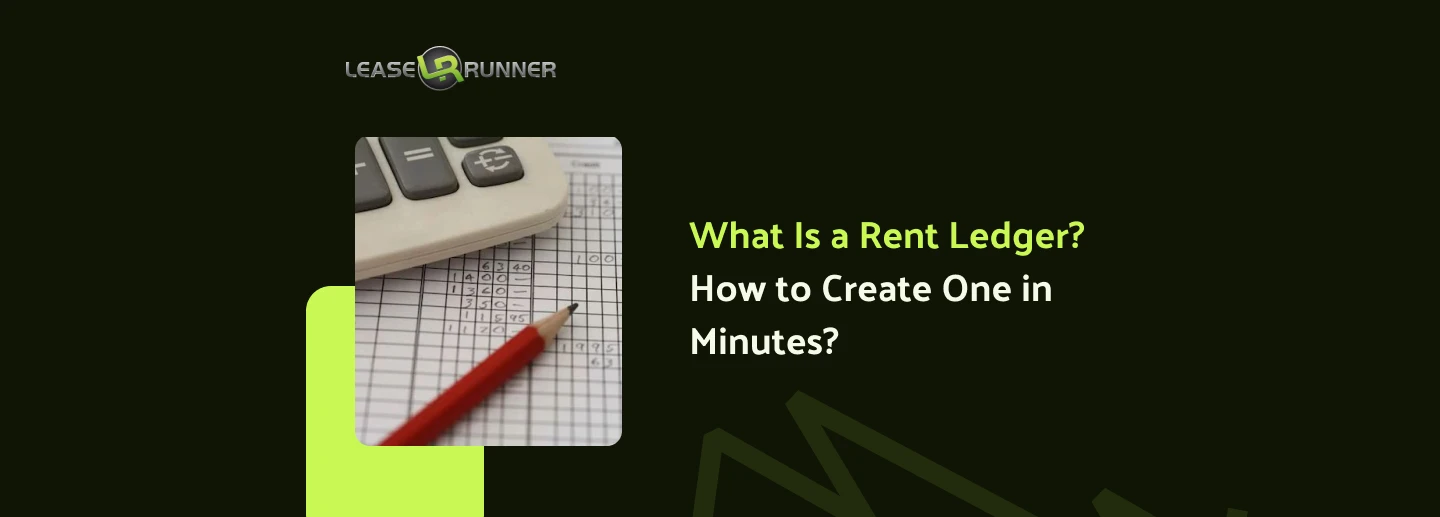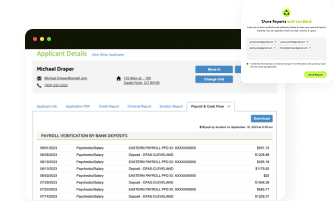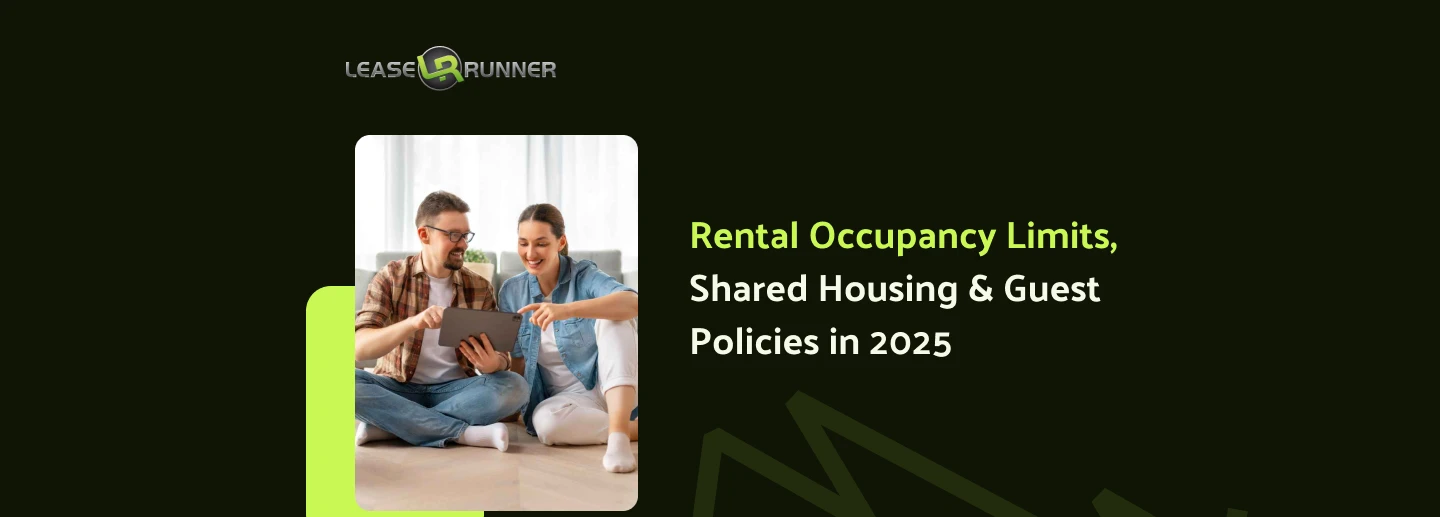Many landlords and tenants ask, “What is a rent ledger?” A rent ledger is a simple, detailed record of all rent payments and related charges for a rental property. It functions as both a rental payment record and a chronological rent log, giving landlords and tenants a clear view of financial transactions.
Whether you manage one apartment or many rental units, knowing what is a ledger for an apartment or a ledger for rental property is very important. A rent ledger supports rental income tracking, simplifies tax preparation for rental property, and serves as proof of rent payment during disputes.
This guide covers the main parts of a rent ledger, its benefits, and how property managers can use both rent ledgers and rent rolls to manage properties effectively. We also share sample templates and tips for keeping accurate records in 2025. Don’t hesitate and scroll down now!

Quick Facts Table About What Rent Ledger Is
What Is a Rent Ledger?
A rent ledger, also called an account rental ledger from a private landlord, is a financial record that landlords use to track a tenant’s rent payments and related charges. Sometimes referred to as a tenant ledger or apartment ledger, it serves as a central document that shows when rent was paid, how much was paid, and whether any rental arrears or late fees remain.
For example, if a tenant’s monthly rent is $1,200 but they submit the payment late and incur a $50 late fee, the landlord will record both the rent and the fee in the ledger. This helps answer the question of what is a rent ledger clearly: it’s a transparent tool for financial tracking.
Landlords rely on rent ledgers to:
- Monitor rent collection records and patterns over time.
- Maintain accurate property financial transactions for accounting, helping to control property management costs.
- Simplify net rental income calculation during tax season.
- Provide documentation in case of security deposit disputes, evictions, or legal proceedings.
In short, knowing what is a rent ledger is essential for property management. A rent ledger is also used to track special cases like tenants paying 3x the rent in advance.
Rent Ledger vs. Rent Roll: What’s the Difference?
- A rent ledger focuses on one tenant or unit. It shows every rent payment and fee in detail. For example, if a tenant missed two payments and paid one late fee, the rent ledger will list all these transactions.
- A rent roll shows a summary of rent collected from many units or properties. Property managers use rent rolls to see the total income each month. For example, a manager of a 20-unit building uses a rent roll to check overall rent collected, but looks at rent ledgers to see if any tenant is behind on rent.
Both tools work together. The rent ledger gives detailed tenant info. The rent roll gives a big-picture view of income. Using both helps landlords manage rent collection well and make smart decisions.
What Does a Rent Ledger Include?

A rent ledger is a thorough record of all the rent-related transactions for a property or renter. There are always some crucial features in a rental ledger, whether it's a rent ledger from a private landlord or a property firm, to make sure it's clear and accurate.
A typical rent ledger contains:
- Tenant name and contact information: Identifies who the payments belong to.
- Property address and unit number: Specifies the rental unit.
- Rent amount and payment frequency: Shows how much rent is due and how often (monthly, quarterly).
- Payment dates and amounts: Records when payments were made and how much was paid.
- Payment types (common): Notes whether the payment was made by cash, check, or electronically.
- Late fees or penalties: Tracks any additional charges for late payments.
- Outstanding balances or arrears: Shows any unpaid rent or fees still owed.
- Notes on payment issues or disputes: Record communication or problems related to payments.
This setup makes it easier to prove payments, calculate rent increases fairly, and evaluate tenant reliability.
How to Create an Accurate Rent Ledger?
Maintaining a rent ledger is only effective if it is set up and managed correctly. Landlords should follow a structured process to ensure accuracy, consistency, and reliability.
Step 1: Choose your format
Decide whether you will keep your rent ledger in paper form, spreadsheet software (Excel, Google Sheets), or Digital (DIY rent ledger from bank statements or software).
- A simple spreadsheet may be sufficient for landlords managing one or two units.
- For landlords with multiple properties, software platforms such as LeaseRunner or Rentec Direct provide automation and reporting features.
For example: A landlord with one rental apartment might set up a Google Sheet to track monthly rent, while a landlord with 10 units may prefer a property management platform to streamline data entry and reminders.
Step 2: Set up the ledger
Design the ledger with clear columns to capture essential details:
- Tenant name and unit number
- Rent due date
- Payment date
- Amount due vs. amount paid
- Late fees or other charges
- Remaining balance
Example: A row in the ledger could look like this:
Step 3: Record transactions promptly
Enter every transaction as soon as it occurs. Delays can cause discrepancies and confusion, especially if a tenant disputes their balance.
- Record partial payments separately.
- Note the payment method (cash, check, online transfer) for future reference.
- Apply fees consistently to avoid claims of unfair treatment.
Example: If a tenant pays $600 on the due date and another $600 a week later, the ledger should reflect two entries rather than a single combined payment.
Step 4: Reconcile and back up regularly
Periodically review your ledger to ensure all information is accurate.
- Reconcile: Once a month, compare your ledger to your bank statement or payment receipts to confirm every transaction is recorded correctly. If there are any discrepancies, find the cause and make adjustments.
- Back up: If you are using a digital ledger, create regular backups on cloud storage platforms like Google Drive, Dropbox, or iCloud to prevent data loss. If you use a paper ledger, you can take photos or make photocopies for your records.
Maintaining an accurate rent ledger simplifies financial management and demonstrates professionalism. It also integrates with tools like credit checks or income verification and cash flow reports for deeper tenant financial insight.
How to Maintain an Accurate Rent Ledger
For landlords, an accurate rent ledger is more than just a financial record—it is a vital management tool that ensures consistent cash flow, reduces disputes, and strengthens legal protection. By maintaining the ledger properly, landlords can track every payment, fee, and adjustment with confidence.
Manual Methods vs. Property Management Software
- Manual rent ledgers often use spreadsheets or paper records like Excel or Google Sheets. In this setup, landlords manually record tenant names, rent due dates, payment amounts, and late fees. While this method works for a single unit or small portfolio, it can be time-consuming and prone to errors such as missed entries or calculation mistakes.
- Digital tools, on the other hand, automate the procedure. When renters pay online, software like LeaseRunner immediately changes their payment records. The system can also add late fees, update balances instantly, and generate financial reports.
Another major advantage of digital tools is data security. Unlike paper ledgers that can be lost or damaged, digital ledgers are stored in the cloud, offering backups and easy access from anywhere.
Best Practices for Accuracy and Consistency
- Update immediately: Record payments and fees as soon as they occur to avoid missing information.
- Include All Fees: Add late fees, maintenance charges, or adjustments to keep the ledger complete.
- Backup Records: Save copies regularly, whether digital backups or physical copies, to prevent data loss.
- Use Clear Formats: Keep entries consistent with clear columns for payment date, amount, method, and notes.
This ensures reliable financial tracking and compliance, especially for regulated units like rent-stabilized vs. rent-controlled properties.

Top Benefits of Using a Rent Ledger for Property Management
Landlords and renters both need a rent ledger. It keeps track of rent payments, late fines, and balances, which makes it easier to manage rental properties. We will look at how rent ledgers help property owners, managers, and renters in the next section.
For Landlords and Property Managers
- A rent ledger helps landlords track every payment and spot late or missing rent quickly. For example, if a tenant consistently pays late, the ledger highlights this pattern.
- It will allow the landlord to address it early or consider lease renewal terms carefully. It also simplifies tax reporting by showing clear income and expenses, making tax season less stressful.
- A full rent ledger is strong evidence in eviction or dispute cases. Landlords who keep accurate, current records are more likely to prevail in court.
- If a tenant asserts they don't owe rent, for instance, the landlord could show them the rent ledger, which indicates when payments were made, how much they were, and any late fees that were charged. This honesty makes it less likely that people would dispute and speeds up the judicial process.
For Tenants
- Tenants may see a clear payment history in a tenant ledger, which is good for them. This record lets renters show that they paid their rent on time, which is particularly helpful when they are looking for a new place to live. For instance, a tenant with a good payment history and no late payments might make their rental application stronger. It also helps settle disagreements by making it clear what was paid and when, which cuts down on confusion.
- A rent ledger makes it easier for landlords and renters to talk to each other and trust each other. It helps with improved money management, legal protection, and holding tenants responsible.
Along with rent ledgers, property managers may also utilise rent rolls to keep track of their total revenue while maintaining precise records on each renter. These technologies work together to make it easier and clearer to manage rental properties.

How Rent Ledgers Are Used in Property Management
Landlords and property managers need rent ledgers to do their jobs well. They assist in keeping track of rent payments, watch how tenants act, and aid with legal and financial matters. Below, we provide concrete instances of how rent ledgers make property management better.
Monitoring Rent Payments and Tenant Behavior
Landlords keep track of their tenants' rent payments and whether or not they fulfil the conditions of their leases. The rent ledger, for instance, shows when a renter pays late a lot of times. This helps landlords choose between renewing a lease or giving warnings.
Property managers may see renters who are consistently late with their rent and do something about it, like issue reminders or charge late penalties.
Facilitating Rent Collection and Financial Tracking
A rent ledger helps in collecting rent by showing precisely how much is due and paid. This information may help landlords write correct letters to collect rent or figure out late fines.
Example: If a tenant owes $1,250 with fees, the ledger shows exact numbers, clarifying what Is a Rent Ledger as both financial and legal protection.
Supporting Legal and Financial Documentation
In court proceedings like eviction hearings, rent ledgers are used as evidence. To settle conflicts, courts typically need to see extensive payment histories. For example, if a renter says they don't owe rent, a rent ledger that shows when and how much they paid might help the landlord's case.
Also, rent ledgers make it easier for landlords to file their taxes by clearly showing their rental revenue and costs. This organised way of maintaining records cuts down on mistakes and makes it easier to file taxes.
Rent ledgers provide detailed insights that answer the question what is a rent ledger clearly for property managers and landlords alike.
Conclusion
In 2025, every landlord must know what Is a Rent Ledger and use it properly. A rent ledger tracks holding payments, late fees, and balances clearly. For example, landlords can spot late payments early and send timely rent collection letters.
Tenants get a clear payment history, which helps resolve disputes. Using a ledger for rental property or an apartment ledger also supports legal cases by providing proof of payment.
Digital tools like LeaseRunner simplify updating and managing rent ledgers, making the process accurate and fast. Keeping detailed and organized rent ledgers helps landlords manage multiple units efficiently. It also builds trust with tenants by promoting transparency.
In 2025, using rent ledgers correctly will improve rent collection, legal compliance, and financial tracking for all rental properties. If you still have questions related to this topic, feel free to refer to our LeaseRunner blog.
FAQs
Q1. What Does a Rental Ledger Look Like?
A rental ledger is a detailed record tracking every rent payment and related transaction for a tenant. It has spaces for the date of payment, the amount paid, the mode of payment (cash, cheque, or electronic), and the balance outstanding.
For instance, a landlord would write down $1,200 in rent and a $50 late charge to represent the new amount. A lot of landlords utilise spreadsheets or other digital tools to make sure these documents are correct and easy to find. This style makes it easy for landlords to keep track of payments and for renters to check their payment history.
Q2. How Can Property Managers Use Rent Rolls?
Property managers use rent rolls to view rental income across many units or properties. Unlike a rent ledger that tracks one tenant's payments, a rent roll summarizes rent amounts, tenant names, lease terms, and payment status for all units.
For example, a manager of a 30-unit building uses a rent roll to see total income, find vacancies, and spot late-paying tenants. This aids budgeting, forecasting, and decisions on rent increases or lease renewals. Rent rolls also help report property performance to owners.
Q3. What is a ledger for an apartment?
An apartment ledger tracks rent payments and fees for a specific rental unit. Understanding what is a rent ledger helps landlords manage individual tenant accounts effectively.
Q4. How often should a rent ledger be updated?
A rent ledger should be updated every time a payment or charge occurs, usually monthly. Regular updates keep records accurate and help landlords quickly spot late or missing payments.
Q5. Can tenants request their rent ledger?
Yes, tenants can request a copy of their rent ledger from landlords. This helps tenants verify their payment history and resolve any disputes about rent or fees.
Q6. How does a rental ledger help in legal cases?
A detailed rental ledger provides proof of payment history in eviction hearings or other disputes. Courts rely on these records to verify rent owed and payments made, supporting landlords' claims.
Q7. What is the difference between a rent ledger and a rent roll?
A rent ledger tracks payments and charges for one tenant or unit in detail. A rent roll summarizes rent income and tenant information for many units, offering a broad view of property income.




![What Is an Admin Fee for Apartments? [2025 Landlord’s Guide]](https://www.leaserunner.com/storage/413/01KAJSZKW3TMYDTGTKJV8VHGPN.webp)


